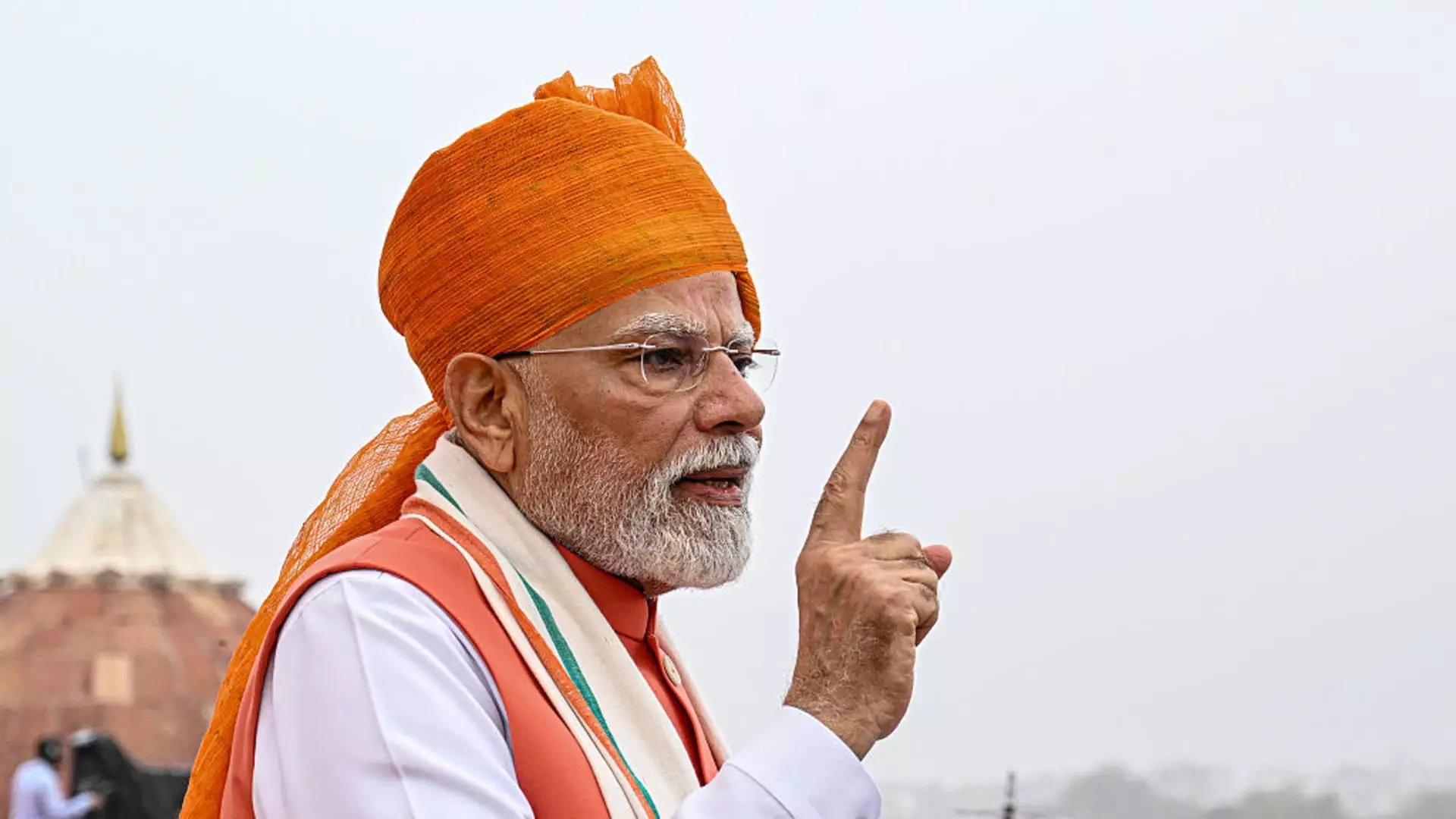India stands at a pivotal crossroads where visionary policy reforms threaten to redefine its economic landscape. Prime Minister Narendra Modi’s recent announcement of aggressive tax cuts signals a deliberate effort to stimulate growth in a nation burdened by sluggishness and external pressures. This strategy—aimed at simplifying the complex Goods and Services Tax (GST) system and reducing compliance hurdles—demonstrates a pragmatic recognition that structural overhaul is essential to unlocking India’s latent potential. Yet, whether these reforms will fulfill their promise depends on more than just headline-grabbing measures; it hinges on their execution and the broader contextual challenges looming in the background.
The tax overhaul, which consolidates multiple GST slabs into a more manageable two-tier structure, reflects a thoughtful move to create a more growth-oriented environment for businesses, especially in manufacturing, logistics, and consumer sectors. Easing the burden on small and medium enterprises (SMEs) can serve as a catalyst for broader economic participation, fostering entrepreneurship and job creation. However, the question remains whether such reforms are robust enough to bypass bureaucratic inertia and political resistance, or whether they risk being mere superficial changes that fail to address deep-seated structural inefficiencies.
Furthermore, India’s reliance on domestic consumption as the primary engine of growth makes these reforms even more critical. Consumer spending now accounts for over 60% of GDP, and the move toward rationalizing taxes could invigorate a sector that has been historically dampened by high levies and regulatory complexities. Still, the promise of sustained consumption growth hinges on broader issues such as income stability, wage growth, and consumer confidence—areas where progress has been inconsistent. Low real wage increases and declining household savings threaten to dampen the immediate impact of these measures, warning that the economic revival may be more fragile than headlines suggest.
External Pressures and Geopolitical Risks: Window of Opportunity or Pandora’s Box?
While India is cautiously optimistic about domestic reforms, it faces perilous external headwinds—particularly the burdensome tariffs and trade sanctions imposed by the United States. The recent increase in U.S. duties on Indian imports, especially related to its purchase of Russian crude, presents a significant threat to export growth and foreign investment. Although India’s economy is predominantly a consumption story, it cannot afford to ignore the implications of declining export competitiveness or retaliatory measures from trading partners.
Aid from domestic reforms and protective measures may only go so far if external shocks intensify. The geopolitical weight of this situation is formidable; it spotlights the delicate balancing act India must perform—maintaining strategic independence while navigating a tense global trade environment. The optimism surrounding Modi’s reforms risks being overshadowed if external tensions escalate or if major trading partners tighten restrictions further. This reality underscores the importance of diversifying economic drivers beyond just consumption and internal reforms; India must bolster manufacturing and export capacity if it hopes to sustain growth amid turbulence.
Additionally, the broader geopolitical landscape underscores the limits of relying heavily on internal market reforms. The ongoing global power struggle and the risk of supply chain disruptions could neutralize the benefits of tax simplification if India’s export sectors are squeezed or face retaliatory tariffs.
Are These Reforms Truly Enough to Transform India’s Economic Future?
Critics argue that incremental reforms are insufficient to address India’s entrenched structural weaknesses. While simplified taxation and a focus on boosting consumption are commendable, they overlook deeper issues: inadequate infrastructure, persistent regulatory bottlenecks, and uneven regional development. The belief that cutting taxes alone can propel India into a new era of prosperity risks overestimating the power of policy gestures without comprehensive institutional reforms.
Moreover, the rise in auto sales and optimism among industry players signals hope but also masks lingering vulnerabilities. The auto sector’s recent rebound may be just a temporary blip, as underlying challenges such as low consumer wages, high ownership costs, and environmental concerns threaten long-term sustainability. If growth remains dependent on a few sectors or demographic shifts, India risks falling into the trap of short-lived pockets of prosperity that do not translate into lasting economic transformation.
Yet, the government appears aware of these pitfalls, emphasizing technology-driven efficiencies—such as pre-filled tax returns and faster refunds—as signs of a digital modern economy. This move could improve efficiency and transparency, but whether it will significantly improve productivity or just create a veneer of progress remains uncertain. To truly elevate its economy, India needs bold, holistic reforms that go beyond tax slabs, addressing education, healthcare, and infrastructure—areas where stagnation persists.
The Center-Left Perspective: Hope Amid Challenges
From a center wing liberal standpoint, these reforms represent a cautious but necessary step forward. While they are not the sweeping overhaul some had hoped for, they demonstrate an acknowledgment that India must modernize in order to stay competitive globally. The focus on reducing barriers for small businesses and boosting domestic consumption aligns with the belief that inclusive growth is critical to India’s future stability.
However, a truly progressive approach would demand proactive measures to ensure that growth benefits reach the underserved and marginalized populations. Simply cutting taxes or easing regulations without concurrent efforts to improve social safety nets, education, and healthcare risks widening disparities and fueling unrest. The promising signs of consumption-led growth could falter if income inequality and labor rights are not prioritized alongside economic reforms.
In this light, the reforms announced should be viewed not as a cure-all, but as part of a broader, more coordinated effort to craft an equitable and resilient economy. Modi’s government must seize this moment to push for more comprehensive policies that address both immediate fiscal challenges and long-term development needs—otherwise, India’s current rally may prove to be a fleeting illusion rather than a springboard toward lasting prosperity.


Leave a Reply